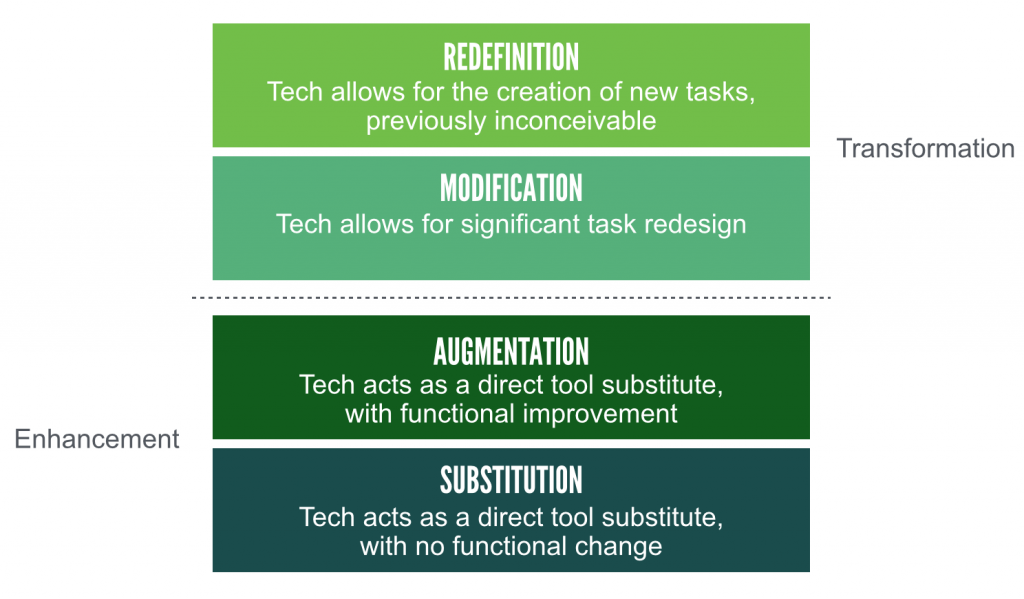Last month I wrote a report for a client about the future of work. In my contract is a clause that says that, apart from anything commercially sensitive, my work for them is shared under a Creative Commons license.
I’m therefore sharing a much shorter version of the 23-page report I researched and wrote for them. There was some really interesting stuff I turned up in my research around organisational structure, culture, and retention, but that section was too intertwined with the client’s plans to be able to easily and effectively separate out.
Introduction
“Your best practices won’t save you.” (John Cutter)
The main trends around the future of work seem to be broadly twofold:
- Empowering individuals and teams to make their own decisions around technology
- Democratising the process of deciding what kind of work needs to be done
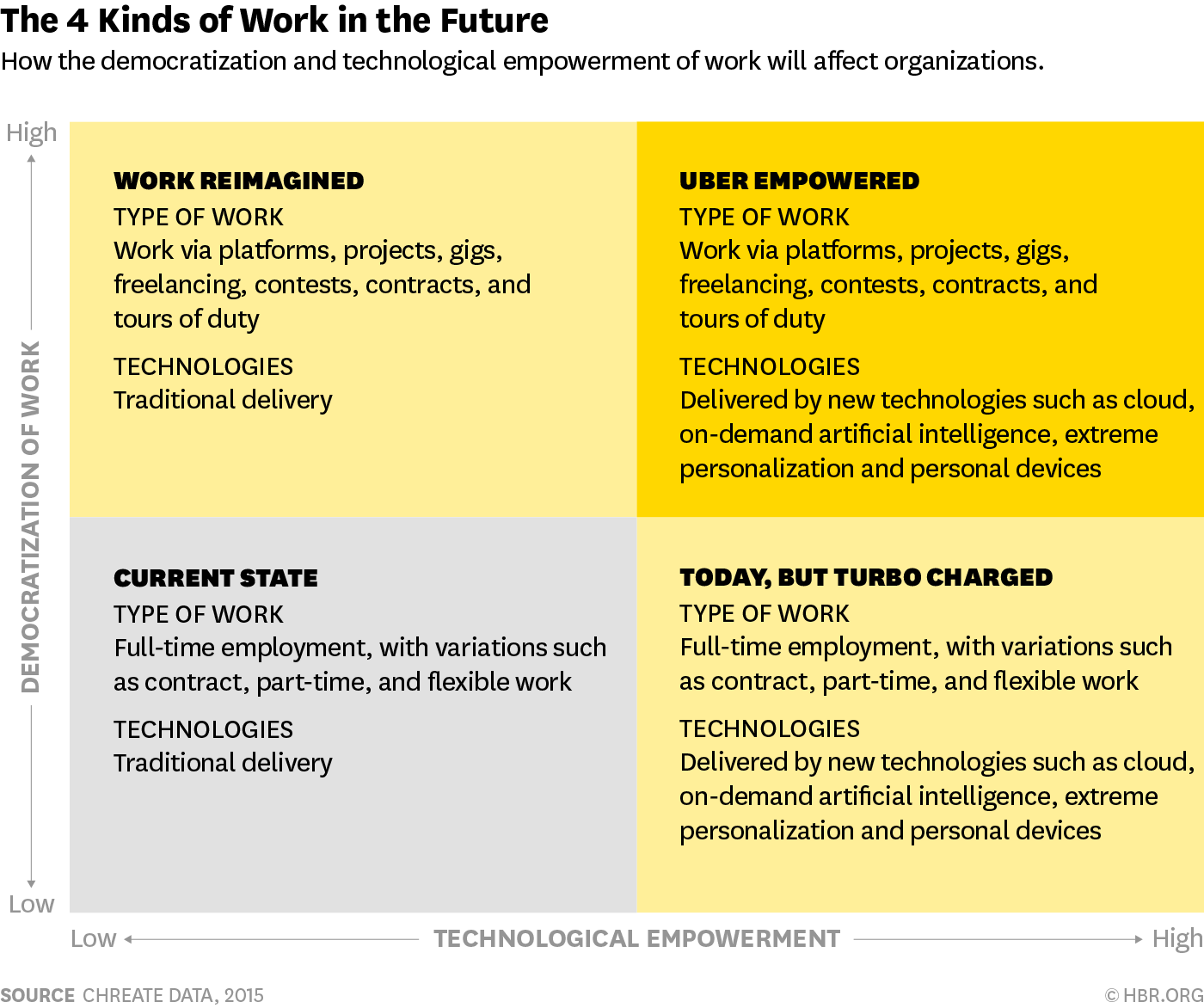
These two mega themes (taken from ‘uber empowered’ quadrant of the above Harvard Business Review digram) can be broken down into four, more practical, sub-themes:
- Demise of hierarchies
- Re-thinking the location of work
- Workplace chat
- Mission-based work
The following posts in this series expand and explain each of the above points. The original report made some recommendations for the client. Given I don’t know your context, I’m going to refrain from appending a conclusion to this series.
1. Demise of Hierarchies
After predictions of its demise, the traditional office structure is crumbling. Only 38 percent of companies in a recent survey say they are ‘functionally organized’. For large companies with more than 50,000 employees, that number shrinks to 24 percent. (Bloomberg)
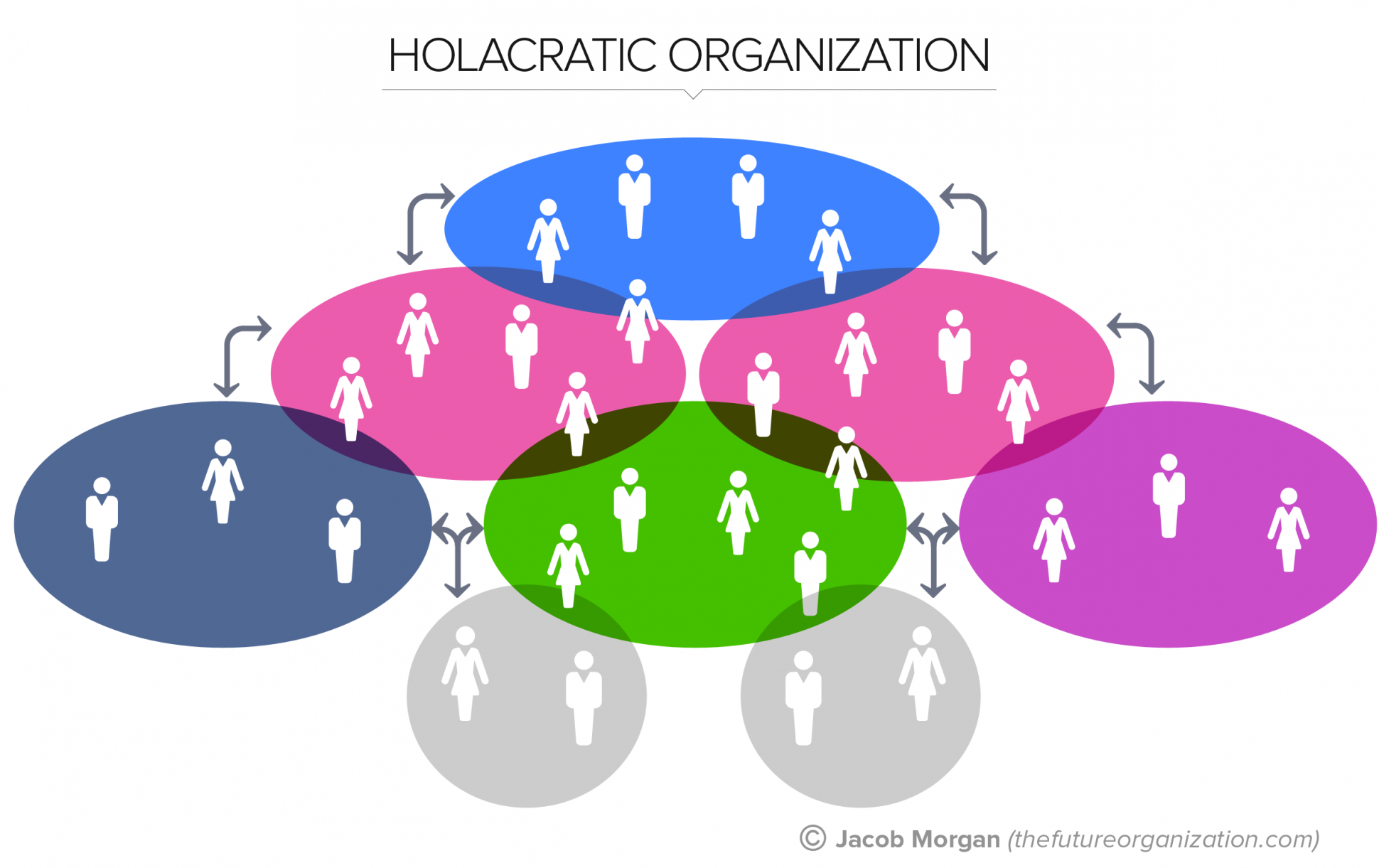
(image taken from this post)
The buzzterm at the moment is around holacracy, an approach in which “authority and decision-making are distributed throughout a holarchy of self-organizing teams rather than being vested in a management hierarchy”. This governance model has been adopted by Zappos, Precision Nutrition, and (until recently) Medium.
Self-organising is taken to its extreme, or logical conclusion, with Valve, the company best known for the Half-Life game series and ‘Steam’ store. Their handbook for new employees explains that they hire people rather than roles, meaning people are “hired to constantly be looking around for the most valuable work [they] could be doing.” Hiring, firing, and new projects are all managed via a completely flat structure.
Metaphors are important in organisational structure, and many futurists use the idea of the network to explain their ideas. Esko Kilpi, for example, states that “the architecture of work is not the structure of a firm, but the structure of the network. The organization is not a given hierarchy, but an ongoing process of responsive organizing.” In a post examining why employees become disengaged, Stowe Boyd coins the term ‘circumvising’ to explain the shift from ‘supervising’ to a form of work where, “instead of a manager you report up to and who directs the work of those below, the social context…will constrain and support the worker from all around.”
2. Rethinking the Location of Work
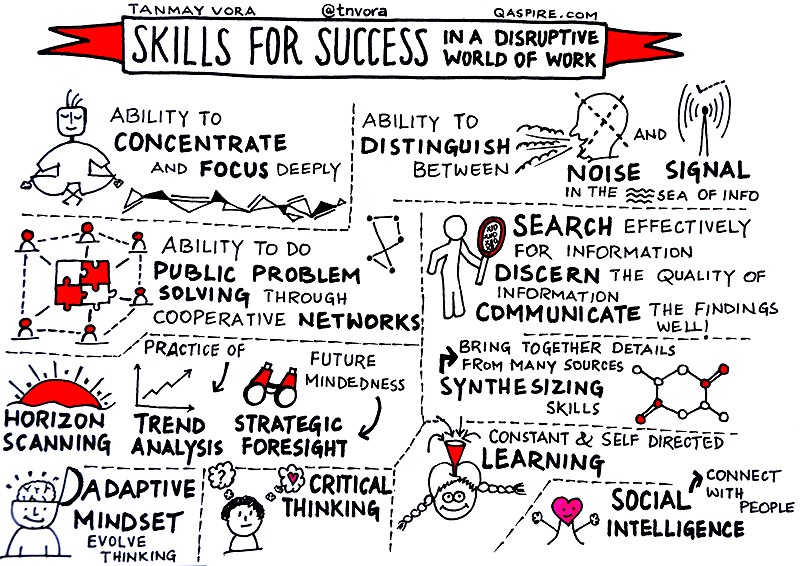
(image taken from this post by Tanmay Vora)
We shape our buildings, and afterwards our buildings shape us. (Winston Churchill)
One trend of recent years that is universally slated in both the popular press and by futurists is that of open-plan offices. According to Stowe Boyd,
More than 40% of the respondents to a recent Berkeley survey reported that workplace acoustics make it harder for them to do their job, while other factors, like lighting, air quality, seating, etc, were rated as making it easier to work.
The assumption is that open-plan offices enable more serendipitous connections to take place. However, this is often at the expense of ‘deep work’ as noted by Cal Newport in his recent book Deep Work: Rules for Focused Success in a Distracted World. It often leads to more introverted employees using headphones in order to concentrate and feel more comfortable.
Home working solves some of these problems and, indeed, many organisations have a ‘remote working’ policy, meaning some (or all) of their employees are based from wherever they happen to live. This, of course, requires a certain type of worker, with particular expectations around flexibility, availability, and digital skills. Implementing this kind of policy without training and explicit expectation-setting (for both office-based and remote workers) can lead to unnecessary misunderstanding and anxiety.
3. Workplace chat

So this is one megatrend: the widespread adoption of tools based on the chat design metaphor across the board in personal and work life. Chat is the new normal for communication, displacing both email and social collaboration tools. (Stowe Boyd)
The hot new technology that everyone is talking about is Slack, a ‘workplace chat’ tool with APIs meaning it integrates with everything. It is already a billion-dollar business, and this is for at least two reasons. The first is a desire for employees in most organisations to get out of their inbox. Another is that it supports the move away from a static org chart and is more responsive to the true power dynamic within organisations.
There have been many posts about the relative merits of workplace chat apps. Most futurists believe that adopting such tools is not a panacea to current workplace problems, but rather a way to demonstrate in a concrete way how teams can interact in a different way. For example, the theory of social crowding suggests that workplace chat is at its most effective when used by small teams of less than 10. This ensures that those who are doing the chatting are also the ones doing the work.
4. Mission-based work
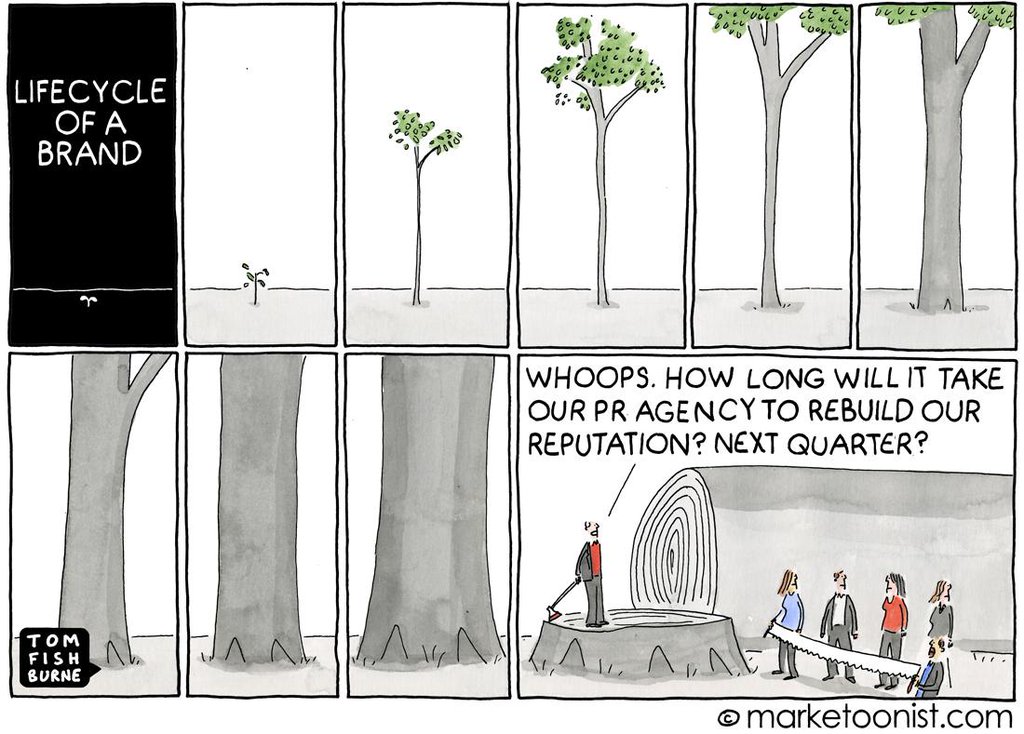
Today, all companies need a constitution. No company should operate on implicit cultural rules that are based in a shadowy way on oligarchic myths. (Stowe Boyd)
Often cited as a something particularly important to ‘Millennials’ (those who reached young adulthood around the year 2000), futurists see mission-based work as key to ensuring employee fulfilment at any age. Loyalty these days is often to the job rather than to the organisation — so long as the job matches the ‘mission’ that the employee feels is central to their existence.
Graduates are queuing up to work for brands who match their outlook on life, often foregoing higher salaries elsewhere to do so. Recent research from Gallup included a survey of almost 50,000 business units which showed that employee engagement is a key indicator of business success. This is an important trend to consider.
Further reading
I put together an epic Google Doc of links and images to help with my research for the original report. You can access that here.
Banner image CC BY-NC-SA Daniel Foster
Questions? Ask in the comments and I’ll go into more detail about any of the above.
If you’d like my help in a consultative capacity, please get in touch: [email protected]

